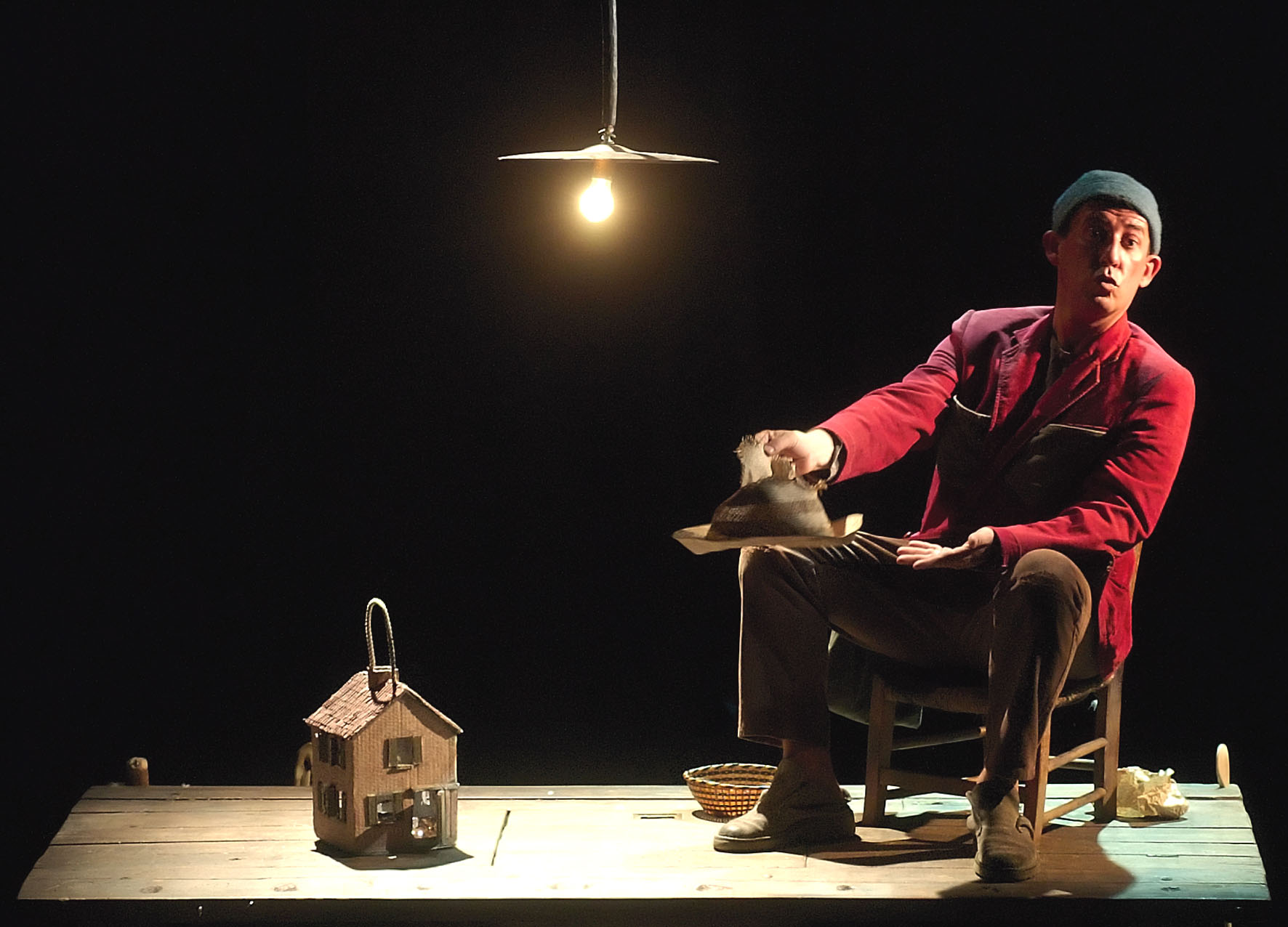Thumbelyn (Pollicino) offers the public an opportunity to confront the feeling of fear.
Thumbelyn’s story is, in fact, a “dark fairy tale”: “how can you sleep? It may be fear, but I can’t”, Thumbelyn says to his older brothers.
The protagonist of the story is small, but his fear, great, does not annihilate him. What, on the contrary, makes him the winner in the face of life’s adversities is curiosity and his courageous desire to know reality, even in its cruellest aspects.
It is curiosity that pushes Thumbelyn to watch over what his parents say and do and he is able to quickly warn of the danger and to equip himself to deal with it.
From his father’s house to that of the Orc, through the woods he goes to the world, to other woods and other houses…
doesn’t come home and doesn’t get lost: his journey continues. In the company of his brothers.
If it is true that Thumbelyn is only thinking, it is equally true that, in his estrangement from home, he alone is not. The presence of the brothers is warm, in the darkness and cold of the night. Even in dramatic moments there is someone to play with, to argue with, to face the unknown.
A show dedicated to all the little thumbs that, lightly, cross the woods of the world. Even those devastated by bombs.
The show is performed by an actor-narrator who lives and tells the story, evoking it and relating, sometimes directly to the public. The narration and the relationship with the spectators are ironic, comical, sometimes in a popular style, with frequent dialectal brackets in a dialogue free from the rhythms of Romagna. The props and the writing of the space offer an example of “theatre of narration with objects”, characteristic of the historical collaboration between Claudio Casadio and Marcello Chiarenza.
The work offers many points for reflection and study: from the point of view of the classic fairy tale (the role of the protagonist, the forest as total space, the homes of parents and the Orc, the topos of abandonment and devouring, the final catharsis and the positive solution of the story), from the point of view of language and from the psychological in the relationship of the story with the existential experience of children and their ability to “save” themselves.


